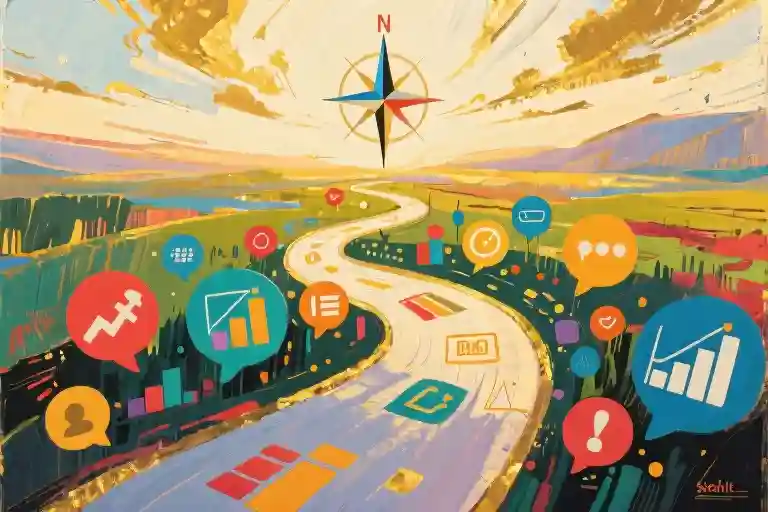A recent Fortune.com report reveals a startling workplace trend: 60% of employers are terminating Gen Z employees shortly after hiring, with 1 in 6 managers vowing never to hire recent graduates again. These statistics paint a troubling picture for the most tech-savvy generation in history – digital natives who grew up with smartphones in their hands yet struggle to adapt to professional environments.
This generational disconnect raises critical questions. How can a cohort that mastered TikTok algorithms and remote learning by age 12 face such high workplace rejection rates? Why do 75% of employers report dissatisfaction with their Gen Z hires’ performance? The answers lie at the intersection of upbringing, education systems, and evolving workplace expectations – a perfect storm we’ll explore through data, expert insights, and actionable solutions.
Over the next sections, we’ll examine:
- The hard numbers behind the Gen Z workplace crisis
- How childhoods dominated by social media created unexpected skill gaps
- Why traditional education failed to bridge these divides
- Practical strategies for employers, educators, and Gen Z professionals
- Success stories proving generational collaboration works
This isn’t about assigning blame, but understanding how we can help an entire generation transition from digital playgrounds to professional success. The workplace isn’t broken – it’s evolving. And with the right adjustments from all parties, Gen Z’s unique strengths could become their greatest professional assets.
The Gen Z Workplace Crisis: By the Numbers
Recent workforce data reveals a startling disconnect between Generation Z employees and employer expectations. According to a Fortune.com report, 60% of employers terminate Gen Z hires within their first year, while 1 in 6 managers actively avoid recruiting recent graduates altogether. These statistics paint a concerning picture for the most technologically fluent generation entering today’s job market.
The Hard Numbers Behind the Trend
- Immediate turnover: Three out of five Gen Z employees (born 1997-2012) face early termination across industries
- Employer dissatisfaction: 75% of surveyed companies report significant performance gaps among new graduate hires
- Recruitment reluctance: 16% of hiring managers now hesitate to consider fresh graduates for open positions
“We invested months in training only to discover fundamental gaps in professional communication,” shared an anonymous HR director from a Fortune 500 company. “Something as basic as email etiquette requires remedial coaching.”
Generational Performance Comparison
When benchmarked against previous cohorts at similar career stages:
| Generation | Early Termination Rate | Employer Satisfaction |
|---|---|---|
| Gen Z | 60% | 25% |
| Millennials | 42% | 61% |
| Gen X | 38% | 73% |
This generational disparity becomes particularly striking when examining specific skill gaps:
- Written communication: 68% of employers rate Gen Z’s business writing as unsatisfactory
- In-person collaboration: 57% report difficulties with face-to-face teamwork dynamics
- Problem-solving autonomy: 49% note over-reliance on step-by-step guidance
The Employer Perspective
Recurring themes from management feedback include:
- “They expect TikTok-speed promotion timelines in traditional corporate environments”
- “Digital natives somehow struggle with basic productivity software beyond social apps”
- “Constant need for validation disrupts workflow efficiency”
These challenges manifest most acutely in:
- Customer-facing roles: Where nuanced communication proves critical
- Project-based work: Requiring self-directed time management
- Hybrid workplaces: Blending digital and in-person expectations
While these statistics might appear discouraging, they highlight crucial opportunities for both employers and Gen Z professionals to bridge this emerging workplace divide. Understanding these measurable gaps forms the essential first step toward developing effective solutions—which we’ll explore in subsequent sections analyzing root causes and actionable strategies.
Why Gen Z Struggles: The Root Causes
The Digital Bubble Effect
Growing up with smartphones in hand before learning to ride bicycles, Gen Z developed fundamentally different communication patterns. Research shows the average Gen Zer spends 4+ hours daily on social media platforms like TikTok and Instagram – spaces where interactions thrive on visual snippets, emoji reactions, and algorithmic curation rather than nuanced workplace dialogues. This creates three critical gaps:
- Filtered Communication
- Workplace reality: Constructive criticism delivered face-to-face
- Gen Z default: Curated self-presentation with like/dislike binary feedback
- Attention Patterns
- Workplace needs: Sustained focus during 60-minute meetings
- Gen Z conditioning: 15-30 second content bursts (TikTok’s average video length)
- Conflict Resolution
- Professional expectation: Navigating disagreements through verbal negotiation
- Digital native habit: Block/mute functions as conflict avoidance tools
“We see brilliant young hires freeze during client negotiations because they’re used to editing messages until perfect,” notes HR director Maya Chen from a Fortune 500 tech firm. “Real-time professional conversations don’t have backspace keys.”
The Education Gap
Academic systems worldwide still prioritize standardized testing over essential workplace competencies. A comparative analysis reveals:
| School Curriculum Emphasis | Workplace Demand |
|---|---|
| Individual test performance | Team collaboration (75% employers prioritize) |
| Memorization skills | Critical thinking (ranked #1 soft skill by LinkedIn) |
| Scheduled assignments | Self-directed project management |
This mismatch becomes evident during performance reviews. “Recent graduates expect rubrics for every task like in school,” shares management consultant David Rivera. “We need employees who can define problems before solving them.”
The Feedback Paradox
Gen Z’s workplace struggles often stem from conflicting expectations around recognition:
- Employer Perspective: Annual reviews + milestone acknowledgments
- Gen Z Expectation: Instant validation mirroring social media engagement (likes, shares)
Neuroscience research explains this disconnect – the dopamine-driven feedback loops of Instagram and video games create neurological expectations that traditional workplaces don’t satisfy. However, forward-thinking companies are bridging this gap:
Successful Adaptation Example:
Accounting firm BDO implemented “micro-feedback” through weekly 15-minute check-ins and a peer recognition app. Gen Z turnover decreased by 40% in six months.
The Flexibility Divide
Pre-pandemic workplace norms clash with Gen Z’s fluid concept of productivity:
- Traditional Model: 9-to-5 office presence = professionalism
- Gen Z Interpretation: Output-based evaluation (“Why commute if I code better at night?”)
This tension reflects deeper societal shifts. Gen Z witnessed parents burnout in rigid systems while seeing digital creators thrive through unconventional schedules. The solution lies in redefining professionalism – companies like Dell now measure performance through project completion rather than login times.
Turning Weaknesses Into Strengths
While these challenges seem daunting, Gen Z’s traits become assets when properly channeled:
- Digital Fluency → Can lead workplace tech adoption
- Desire for Purpose → Drives CSR initiatives
- Visual Communication Skills → Enhances presentations
“Our youngest hires revolutionized client reports by replacing 20-page documents with interactive dashboards,” shares marketing VP Elena Petrov. “It took adjusting our management style, but the ROI was incredible.”
The key lies in recognizing these workplace struggles as cultural translation issues rather than generational deficiencies. In our next section, we’ll explore practical strategies for employers, educators, and Gen Z professionals to bridge these gaps.
Solutions for Employers, Educators, and Gen Z
For Employers: Rethinking Management Strategies
The data doesn’t lie – 60% of Gen Z employees face early termination, but forward-thinking companies are turning this challenge into opportunity. Here’s how successful organizations are adapting:
1. Recruitment Revolution
- Replace traditional interviews with real-world scenario testing (e.g., “Handle this angry customer email”)
- Value digital portfolios over GPAs – many Gen Zers showcase skills through personal projects
- Implement “shadow days” where candidates experience actual workflow
2. Workplace Culture Tweaks
- Micro-feedback systems: Weekly 15-minute check-ins instead of annual reviews
- Clear documentation (Gen Z thrives with written guidelines over verbal instructions)
- “Reverse mentoring” programs where Gen Z trains executives on digital tools
3. Training That Sticks
- Bite-sized learning modules (under 10 minutes) with gamified elements
- “Office Basics 101” covering email etiquette, meeting protocols
- Designated work buddies for first 90 days
For Educators: Bridging the Skills Gap
With 75% of employers reporting skill deficiencies, educational institutions play a crucial role in preparing Gen Z for workplace realities.
Curriculum Upgrades
- Mandatory “Professional Simulation” courses covering:
- Handling constructive criticism
- Navigating office politics
- Managing workload stress
- Replace some theoretical assignments with client-facing projects
Corporate Partnerships
- Structured internship programs with progress tracking
- Industry professionals co-teaching courses
- Real-time employer feedback loops on graduate performance
For Gen Z: Taking Ownership of Growth
While systemic changes happen, individuals can immediately improve their workplace adaptability:
Communication Bootcamp
- Practice professional writing (try rewriting social media posts as business emails)
- Record yourself explaining complex topics concisely
- Join Toastmasters or debate clubs
Workplace Mindset Shifts
- Understand the “why” behind tasks (ask supervisors about bigger-picture goals)
- Schedule “focus hours” away from personal device notifications
- Build an “office survival kit” (notebook, charger, professional outfit essentials)
30-Day Challenge
| Week | Focus Area | Daily Action |
|---|---|---|
| 1 | Professional Communication | Send one thoughtful LinkedIn message |
| 2 | Time Management | Block 2 hours of deep work daily |
| 3 | Networking | Have lunch with a different colleague |
| 4 | Skill Building | Complete one industry tutorial |
Remember – workplace success isn’t about changing who you are, but bridging the gap between your strengths and organizational needs. The digital fluency that defines your generation becomes an asset when paired with these adaptive strategies.
Case Studies: Success Stories
While the statistics about Gen Z workplace struggles paint a concerning picture, forward-thinking companies and adaptable young professionals are proving these challenges aren’t insurmountable. These real-world examples demonstrate how bridging the generational gap creates wins for both employers and employees.
Tech Company’s ‘Digital Native Initiative’ Cuts Turnover by 40%
When a Silicon Valley SaaS company noticed 65% of their Gen Z hires left within six months, their HR team implemented an innovative solution. The ‘Digital Native Exchange’ program paired Gen Z employees with senior executives in a reverse mentoring system. Young employees taught digital tools and social media strategies, while veterans shared institutional knowledge and professional networking techniques.
Key results after one year:
- Gen Z retention improved by 40%
- 78% of participants reported better cross-generational communication
- The program became a recruitment differentiator mentioned in 32% of accepted offers
“Our Gen Z employees feel valued for their unique skills rather than criticized for what they lack,” notes the company’s Head of People Operations. “It’s transformed our culture – they’re now our secret weapon for digital transformation.”
From Bottom Performer to Team MVP: A Gen Z’s Journey
Meet Jamie T. (name changed), a 22-year-old marketing associate who nearly lost her first job after college. Initial performance reviews noted:
- Struggled with formal email communication
- Became defensive during constructive criticism
- Frequently distracted by social media notifications
Her turnaround began when her manager implemented these strategies:
- Structured Feedback: Weekly 15-minute ‘growth chats’ instead of quarterly formal reviews
- Skill Pairing: Partnered with a millennial colleague for peer-to-peer learning
- Tech Boundaries: Implemented ‘focus hours’ where Slack status showed DND
Within three months, Jamie:
- Led a successful TikTok campaign generating 200K+ views
- Became the team’s go-to person for Gen Z consumer insights
- Earned promotion to junior campaign manager
“I didn’t realize how different workplace expectations were from college,” Jamie reflects. “Having clear guidelines and a manager who understood my learning style made all the difference.”
Key Takeaways from These Success Stories
- Leverage Gen Z Strengths
- Digital fluency
- Fresh perspectives
- Adaptability to change
- Implement Structural Supports
- Frequent, informal feedback loops
- Peer learning systems
- Technology guidelines (not bans)
- Measure What Matters
- Track retention improvements
- Monitor engagement scores
- Document skill progression
These cases prove that with targeted adjustments, Gen Z employees transform from ‘hiring risks’ to invaluable assets. The solution isn’t expecting young workers to conform to outdated norms, but creating workplaces where diverse working styles can thrive.
Conclusion: Bridging the Generational Gap
Gen Z’s workplace challenges aren’t just hiring headaches—they’re innovation opportunities in disguise. The 60% termination rate and employer frustrations we’ve examined reveal a critical crossroads where generational characteristics collide with traditional work structures. But within this tension lies the blueprint for modernizing workplaces, education systems, and professional development approaches.
Three key takeaways emerge from our exploration:
- This isn’t about blame – The digital-native strengths Gen Z brings (tech fluency, creative problem-solving) simply require different management frameworks
- Adaptation must be mutual – Employers need updated training programs while Gen Z benefits from soft skill development
- Early intervention matters – Universities and companies collaborating on internship programs show 34% better retention rates (LinkedIn 2023 data)
Turning Insights Into Action
For employers, this means:
- Implementing Gen Z mentorship programs where they train senior staff on digital tools
- Redesigning onboarding with micro-learning modules and gamified elements
- Establishing weekly ‘growth conversations’ instead of annual reviews
For educators:
- Integrating workplace simulations into curricula (mock performance reviews, team conflict scenarios)
- Partnering with local businesses for semester-long ‘professional immersion’ projects
For Gen Z professionals:
- Proactively seeking feedback through scheduled check-ins
- Balancing digital communication with in-person relationship building
- Documenting workplace wins in a ‘brag file’ to track professional growth
Success Story Spotlight:
Adobe’s ‘Gen Z Reverse Mentoring Program’ paired new hires with executives to exchange skills—resulting in 89% higher job satisfaction among young employees and 40% faster digital transformation in management practices.
“The companies thriving aren’t those complaining about Gen Z—they’re redesigning workflows to harness this generation’s unique strengths,” notes HR strategist Maya Chen. It’s about building bridges, not barriers.“
Your Next Step:
Ready to assess your Gen Z readiness? Take our interactive [Workplace Generational Fit Quiz] to identify strengths and growth areas—whether you’re hiring, educating, or launching your career.
This isn’t the end of the conversation—it’s the beginning of smarter collaboration across generations. The future belongs to organizations and individuals who can turn these challenges into competitive advantages.





